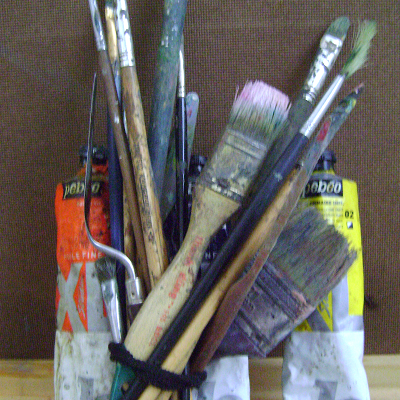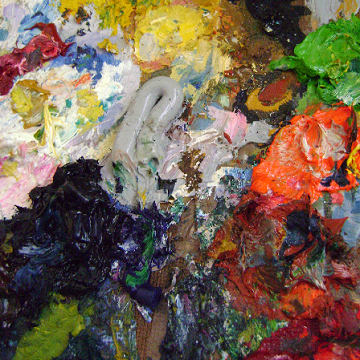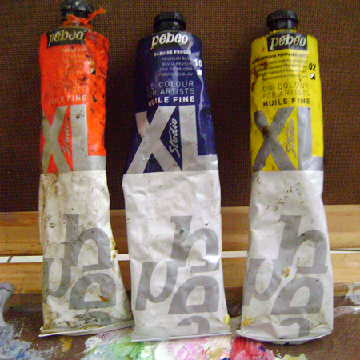MATERIAL WE USE
The canvas

A canvas is the foundation of your painting and you need it to have certain qualities if you're looking to commission a museum quality art reproduction or a top portrait of your family.
The poor quality canvases are loosely woven and the fabric can easily distort when stretched, which in turn will ruin the painting.
So, we always use primed cotton canvases. Primed cotton canvases are the traditional and most commonly used canvases for oil paintings. They are good for stability and offer proven longevity and a surface that will not flex. It's important that the canvas for your art replica or portrait has strength and stability since over time many factors can challenge your oil painting (for example, humid climate, change in temperature, re-stretching).
Brushes

As cheaper brushes shed their hair, we only use the best available brands. If you’re an oil painter you know that there are a lot of oil painting brushes available to choose from - big, small, square, angled, and everything in between. Besides the differences in shape, some brushes use synthetic fibers, some use natural hair, and some paintbrushes have a blend of both. Of course, each of those different types of paintbrushes comes in several sizes.
Oil-Paints
|
|
All ourpaintings are hand-painted with premium Pe’beo oils from France.
Oil paint is essentially one or more pigments combined with a binder (the oil) and a thinner (such as turpentine). The oil functions as a carrier to hold and apply the pigments, while the thinner makes the paints easier to apply to surfaces with a brush. Linseed oil is the most popular oil in these artistic paints because it dries faster and provides more flexibility than other oils, such as walnut or safflower.
Oil paints take longer to dry than other paints, such as watercolors. This provides more time for artists to work with their creations and make changes.
Oil paints provide for a wide range of colors and a rich color depth, as they can be layered and mixed more freely than other paints, such as watercolor or acrylics. Artists can subtly change the richness and tone of their colors by adding minute amounts of other colors, for instance. This is partially true because oil paints take longer to dry.
Oil paints can be applied to surfaces in a greater variety of ways than other paints. Oil paints can be made into thin glazes or thick impastos.
Oil paints can be mixed to appear opaque, transparent or anything in between, as well as have a matte or gloss finish or anything in between.
Oil paints do not noticeably change in color, texture or finish once dried. This makes it easier for artists to predict what the finished creation will look like compared to other paints (such as watercolors) that can change their appearance after drying.



